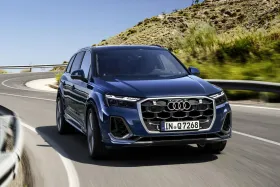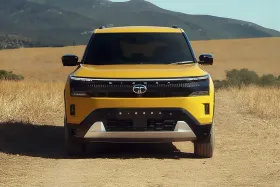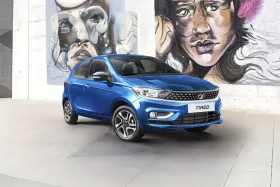ADAS is one feature that almost every manufacturer is looking to include in their cars. Be it a luxury SUV like a Mercedes GLS or BMW X7, or an affordable crossover like the Kia Sonet. Very recently, ADAS has even trickled down to sub-compact sedans like the brand new Honda Amaze. But how helpful or practical is the new safety and convenience feature that is becoming more and more common with each launch in India? Let’s take a look.
WHAT IS ADAS?
First, let’s take a brief look at what ADAS is and how it works. ADAS stands for Advanced Driver-Assistance System. It is a safety feature designed to make cars safer and make driving more convenient for users. ADAS works by implementing several safety features like 360-camera, adaptive cruise control, lane keep assist, emergency braking, and the likes at once to give drivers a holistically safer and more convenient experience. In a nutshell, ADAS partially automates some driving tasks while on the road.

MY EXPERIENCE WITH ADAS
In the last year, I have driven quite a few cars with ADAS and while it looks like something that is super beneficial for Indian roads, it is something that is bound to fail. I absolutely loved the 360-degree cameras – the quality has become brilliant and it is amazing for maneuvering big cars like a Tata Safari or Totoya Innova Hycross into tight spaces.
Even the adaptive cruise control is a blessing on highways. Given how good India’s highway infrastructure has become, adaptive cruise control works just fine where there are proper markings and cars are being driven in a disciplined manner.
However, there are things that are an annoyance, especially on the kind of road conditions we have within cities. For example, the incessant beeping when your car is close to another one, which is the case perpetually during traffic jams. And yes, while most cars allow you to turn all the beeps and alerts off, in many cars that can never happen. And while that is a safety feature OEMs have added on purpose, it does get annoying if you are in narrow lanes.

And while beeps and alerts may be a small problem, sudden unexpected braking and the way the cars try to keep you inside lanes is something that can be dangerous. In case of emergency braking, that has been the case several times in our country. For myself, ADAS-enabled cars have brakes suddenly. And if the braking is not jarring enough, the harshness of it always leaves the driver worried if their car has been hit.
POTENTIAL ISSUES
While I myself haven’t been in any accident because of sudden unexpected braking, it has been the case with many people. There have been many reported incidents of ADAS malfunctioning and people’s cars suddenly coming to a halt, further leading to accidents. Back in April 2024, a user on TeamBHP posted about his Honda City suddenly braking between the Madurai to Chennai highway, resulting in a serious rear-end collision. Earlier, a Hyundai Tuscon owner had reported a similar incident on TeamBHP.

Another issue that I feel can lead to calamities is the way ADAS tries to keep cars in the lane. Any time that you want to switch lanes while using ADAS, the car always tries to pull you back into the lane, requiring a harsh input on the steering wheel. But then again, one can avoid that by using the indicator, which requires a bit of discipline from the driver.
WHAT CAUSES SUDDEN UNEXPECTED BRAKING
You see, ADAS features work on predictability. The data from all the sensors and cameras helps the machine predict when to brake, when to accelerate, and how to keep in lane. But the road conditions in India are one of the most unpredictable in the world, and hence, these systems engage suddenly a lot of times, causing obstruction or worse, accidents.
Another reason here is that ADAS systems are trained outside of India. For example in Europe, most of them are trained majorly on four wheelers. Like the data fed into the system is that of four wheelers, and hence, when those ADAS systems are brought to India, they tend to miss 2 wheelers or 3 wheelers, which are as prevalent as four wheelers on our roads.
HOW CAN IT BE FIXED
One major fix for this problem is to train ADAS systems locally in India and feed data that will not be available in other countries like China and Europe. Not only four wheelers or two wheelers, for India we also have to train the algorithms around stray animals and other obstructions on the road.
Mahindra, for example, has been doing something in this area. The company is locally training ADAS in their cars for India. In their plant in Chennai, Mahindra has set up a whole research facility to develop ADAS for India. Here, the company is not only fine-tuning the system to predict things better according to Indian roads, but is also calibrating different things like how harsh the braking should be, or how tight the steering should remain, if the car is wanting to keep itself in the lane.

Furthermore, the company is also training the models to read animals and other obstructions on the roads, and even read faded markings on the road, something that is more common than clear markings in Indian roads.
“Imported version of the (ADAS) software was not understanding what was going on on the Indian roads,” Mr R. Velusamy, President of Automotive Technology and Product Development at Mahindra told Motor Octane in a YouTube video.
Another challenge is that the camera-based ADAS or level 1 ADAS is not good or accurate enough to predict the extra complicated road conditions in India. Hence, putting a radar sensor is much better since it can read things that a camera might miss. Which is why, manufacturers should stop chasing “who can offer the cheapest ADAS”, but go after “who can offer the safest, most accurate system” instead.

































